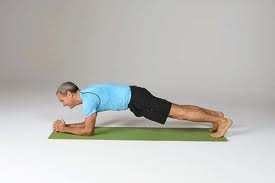Functional training exercises train your muscles to work together and prepare you for daily tasks by simulating common movements you might do at home, at work or in sports. As you use muscles in the upper and lower body at the same time, functional training exercises also activate core stability. A perfect example includes a squat. Squats train your muscles to pick heavy objects from the floor, sitting and standing from a sofa or chair, and enhance your ability to engage in other physical activities that require you to use your legs and core. Squats perform this tasks many times better than knee extensions.
Another benefit of functional training exercises is the fact that you don’t need equipment. Many of these basic exercises can be done using your own body weight. As you use your own body weight during functional training exercises, you also have the opportunity to engage multi-joint and multi-muscle exercises that move the elbow, spine, hips, knees and ankles. Not only will it build strength, but also improve range of motion. If done properly and safely, you can make everyday activities easier, reduce your risk of injury and improve your quality of life.
Here are a few functional training exercises you can do in the comfort of you own home.
Plank
Functionality: This simple exercise strengthens the arms and spine, and it also builds core strength. Can be done on the hands or forearms if you have wrist issues.
Exercise:Â Come to your hands and knees. Make sure the wrists are under the  shoulders. Slowly straighten the legs behind you. As you press the hands in the floor, put more weight on the tips of your fingers, instead of your wrist. Try not to lower your hips and put pressure on the lower back. Engage your core muscles and keep a straight spine. Hold this exercise for 5-10 deep breaths. Options: place knees on the floor and hold, or place forearms on the floor.
shoulders. Slowly straighten the legs behind you. As you press the hands in the floor, put more weight on the tips of your fingers, instead of your wrist. Try not to lower your hips and put pressure on the lower back. Engage your core muscles and keep a straight spine. Hold this exercise for 5-10 deep breaths. Options: place knees on the floor and hold, or place forearms on the floor.
Supported Squat
Functionality:Â This exercise strengthens your quadriceps, hamstrings,  and calf muscles. Squats al decrease the incidence of lower back pain.
and calf muscles. Squats al decrease the incidence of lower back pain.
Exercise: Stand with your feet a little more than hip distance apart. If you need support, place your hands on your hips, a counter of use a chair. Slowly bend your knees, concentrating on using the thigh muscle to do the squatting movement. Don’t use momentum, and always push from the heels when you’re trying to squat upwards. Do the slow squatting exercises until you feel the burn, and can no longer squat upwards anymore (be mindful..don’t go to the point of pain…STOP before you get there). When this happens, your muscles have reached total failure, and you’ve gotten the best workout. It may be good to do 3 sets, 8-15 times.
Lunge
Functionality: This exercise will improve your posture by strengthening the muscles in your upper and mid back, shoulders,  and arms while also toning and strengthening your legs and improving your hip flexibility.
and arms while also toning and strengthening your legs and improving your hip flexibility.
Exercise: Holding a 3-5-pound weight in each hand (or NOT). Stand with feet together, take a big step forward, then slowly lower your body into a lunge position. Make sure your knee is above your ankle, keeping it at a 90-degree angle. Slowly push back up to starting position, pushing from your heel. Do not lean forward when lunging. Do not position your knee in front of your ankle. Do not hunch forward. If you need support, place one hand on the wall or heavy chair.
Torso rotation
Functionality: Having strong oblique muscles is key in avoiding lower back injuries. This exercise improves the strength and coordination of all of your core muscles – and will improve your tone and tighten your waist.  This can be done with hands interlace, holding a 3-8 pound book or if you have a medicine ball at home.
This can be done with hands interlace, holding a 3-8 pound book or if you have a medicine ball at home.
Exercise: Sit on the ground with your knees bent, feet flat on the floor, holding a medicine ball at your chest with both hands. Lean your torso back away from your thighs, increasing the angle at your hips and pulling your belly button in towards your spine. Maintaining your hip angle, rotate your torso to the right, moving your right elbow towards the floor behind you. Return center and rotate to the left. Repeat 10 to 15 times for each side. As you get stronger, perform the rotations with straighter arms and/or use a heavier medicine ball. Always keep your belly button pulled in.
Functional Training: perfect for joints and strengthening muscles
Functional training exercises train your muscles to work together and prepare you for daily tasks by simulating common movements you might do at home, at work or in sports.



